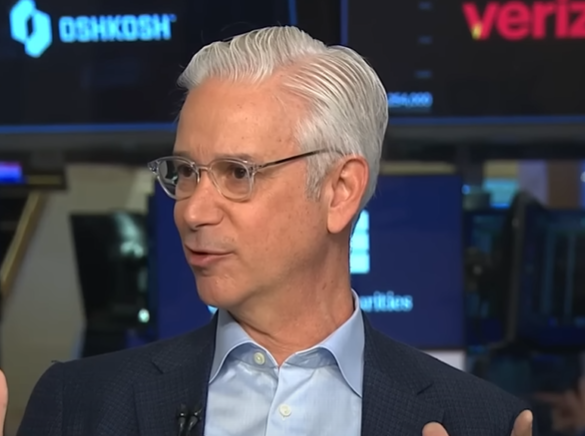Wells Fargo has reached a pivotal milestone as the regulatory asset cap that had restricted its growth since the fallout of its fake accounts scandal has finally been lifted. In an interview with the business channel, CEO Charlie Scharf discussed what this means for the bank, the journey leading up to this moment, and how the internal culture has shifted to meet regulatory demands.
Wells Fargo CEO on Growth
Wells Fargo has reached a pivotal milestone as the regulatory asset cap that had restricted its growth since the fallout of its fake accounts scandal has finally been lifted. In an interview with the business channel, CEO Charlie Scharf discussed what this means for the bank, the journey leading up to this moment, and how the internal culture has shifted to meet regulatory demands.
Scharf began by sharing the credit with the entire Wells Fargo team, stating that the achievement was the result of a company-wide effort. As a gesture of appreciation and to reinforce a shared vision, the bank awarded $2,000 in equity to every employee—from tellers to back-office staff to bankers. This move was designed to foster a sense of ownership and motivate employees to think about the company’s future with a long-term perspective.
While the lifting of the asset cap doesn’t immediately change day-to-day operations, Scharf emphasized that the shift in public and market perception is critically important. For years, Wells Fargo was seen as being in the penalty box, and until regulators formally acknowledged the company’s transformation, its efforts had limited credibility. Now, with regulatory approval, the bank can begin to explore expansion opportunities that were previously off-limits.
The impact of the asset cap has been significant. Scharf noted that the bank may have turned away around $400 billion in deposits during this period. This estimate is based on market growth and other industry comparisons. Beyond deposits, the restriction limited Wells Fargo’s ability to offer investment services, corporate advisory, and access to public markets. These relationships are often built on deposit bases, so the cap effectively kept the bank from fully participating in competitive opportunities. With that limitation now removed, Scharf believes Wells Fargo can compete differently going forward.
Reflecting on the past, Scharf made it clear that the bank’s previous missteps were serious and justified the penalties imposed. He refrained from questioning whether the punishment was excessive, acknowledging that significant regulatory action was necessary due to the lack of progress at the time. The pressure from regulators was tough and direct, but Scharf sees it as appropriate. He credited the forced changes in leadership and the board as key elements that enabled real transformation. Without those measures, the necessary urgency and institutional commitment might never have taken root.
When asked whether the compliance-heavy operations built to satisfy regulators would now be downsized, Scharf clarified that those systems are here to stay. He pointed out that many of the risk and discipline frameworks now embedded within the company didn’t exist before and are essential to maintaining a responsible operating environment. However, he also acknowledged that as these large compliance projects wind down, there is room to improve efficiency and integrate those systems more holistically into the business. This, in turn, will enhance oversight while reducing unnecessary duplication.
Scharf recalled that when he joined in 2019, he was aware of the 14 public consent orders the bank was operating under. What surprised him was not the number of orders, but how little progress had been made in resolving them. He found that many internal disciplines were lacking and emphasized that one of his first priorities was to make regulatory compliance the top agenda item. Bringing in new leaders who could execute on these tasks was crucial to finally meeting the required standards.
Now, with the cap lifted, Wells Fargo is preparing to grow again—but this time, it will do so in a methodical, well-structured manner. Scharf made it clear that the focus will remain on sustainable growth built on the solid foundation of compliance, discipline, and cultural reform that the company has worked hard to put in place.
This development not only marks a turning point for Wells Fargo but also serves as an example of how deep regulatory oversight can lead to meaningful change in the financial industry—though the road is neither quick nor easy.

